Interview with Dr. Tiziana Rossetto EEFIT, Chairperson Earthquake Engineering Field Investigation Team London – United KingdomNatural Perils
Tiziana Rossetto joined University College London (UCL) in 2004. She founded and directs the Earthquake and People Interaction Centre (EPICentre, www.epicentreonline.com), which is a multidisciplinary research group looking at topics of earthquake and tsunami risk. She also directs the MSc Earthquake Engineering with Disaster Management which she founded in 2006. The main focus of her personal research, has been the development of empirical and analytical methodologies for the derivation of vulnerability curves, which can be used to predict the probable damage in structures during an earthquake. Tiziana has undertaken a number of field missions to assess damage to buildings and infrastructure in earthquake zones including the L’Aquila earthquake 2009, Wenchuan, China earthquake of 2008, the Kashmir Earthquake of 2005, the Sumatra Earthquake and Tsunami 2004, and the Bhuj Earthquake, India 2001.
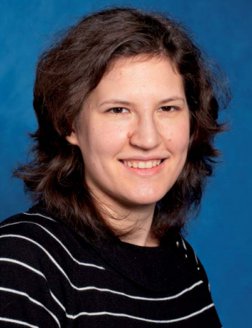
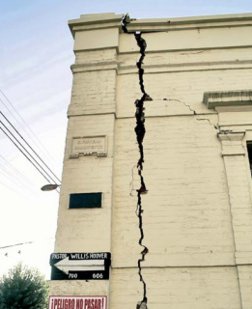
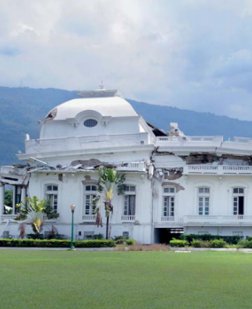

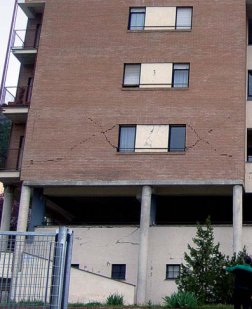
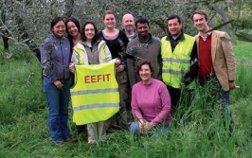


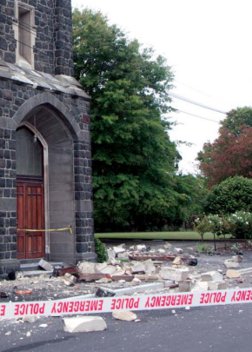
“We do not know where all the world´s earthquake fault lines are”
Following the recent spate of earthquakes and tsunamis around the world, Trébol caught up with the chairperson of the UK’s Earthquake Engineering Field Investigation Team (EEFIT) that is working hard to gather much needed information about these catastrophes and the performance of structures in the face of real events.
EEFIT (Earthquake Engineering Field Investigation Team) is a group of British earthquake engineers, architects and academics who seek to collaborate with colleagues in earthquake prone countries to learn about and improve the seismic resistance of both traditional and engineered structures. EEFIT is a charity and is a joint venture between universities and industry. It was established in 1982 after a small collection of engineers met to discuss and agree the formation of a UK-based earthquake field investigation team.
EEFIT wants to expose earthquake engineers to real earthquake and tsunami damage to report on the performance of civil engineering and building structures under seismic loading
Its founding objectives essentially remain unaltered today. EEFIT wants to expose UK earthquake engineers to real earthquake and tsunami damage to enable them to report on the performance of civil engineering and building structures under seismic loading. And so it sends its members on missions to disaster areas following major catastrophes to observe the damage caused and its effects on the natural and built environment. EEFIT say this is crucial to ensure lessons are learnt and secure vital knowledge to help improve future resilience. Dr. Tiziana Rossetto told us how the organisation is attempting to learn lessons from these events in order to improve future resilience and seismic building design.
Gathering data in the field
“The only way to check the real performance of engineered and non-engineered buildings is by going out to see the effects of an earthquake after it has happened. Even though these are tragic scenarios, they are a test bed for the built environment from which we can learn. Seeing the effects in the field is always different from abstract theory and allows us to bring back lessons learnt into the UK for both engineering practice and academia” explained Dr. Rossetto, who also lectures at the University College London’s Civil, Environmental & Geomatic Engineering department.
There is only 50 years of quality events data and the events often occur only every century, so there is a lot we still do not know about their consequences for structures and building materials
The data collected by EEFIT contributes to an improved understanding of structural behaviour and an evaluation of the adequacy of current design practices and regulations. “Such investigations are vital” affirms Dr. Rossetto because earthquake engineering is a young discipline and further knowledge is crucial to help deal with the uncertainties that surround these events.
“There is only 50 years of quality data regarding earthquakes and tsunamis. With many large earthquakes having return periods that span centuries, there is a lot we still do not know about their forces and the consequences for structures and building materials under the shaking and dynamic loading that they produce,” she stated.
Making EEFIT economically sustainable
The organisation partners with the Institution of Structural Engineers (IStructE), that has offered support since the end of the 1980’s, particularly in areas of administration. The charity has also benefitted from corporate sponsors with the likes of Willis Re., AIR Worldwide Ltd, Aon Benfield and Risk Management Solutions (RMS), offering support from the risk and insurance industry over the last 30 years.
The Engineering and Physical Sciences Research Council (ESPRC) has moved to ensure the future of EEFIT remains bright with a recent award of a research grant to conduct a further five earthquake reconnaissance missions over the next five years. Costs have also been met by membership subscriptions.
Over the years, Field Reports have helped to develop seismic design codes, identify the effects of liquefaction and consider the value of tsunami warning as opposed to tsunami-resistant design
Corporate membership costs GBP 250 and companies that choose to support EEFIT can then nominate an individual from within their company to take part on a mission. Members come from a wide range of backgrounds including academia, civil engineering, technical engineering, social science and the risk and reinsurance industry. The organisation currently stands at around 130 strong.
Whilst the organisation is primarily aimed at ensuring UK engineers and experts are afforded the opportunity to experience and study earthquakes and tsunamis, it does have members from across the world, and partners with worldwide academic institutions, partner institutions of the IStrcutE and foreign branches of member companies for its missions.
The Missions
“We observe the damage and the effects to both the natural environment and the built environment. We try to identify the main lessons that can be learnt. We ask why buildings have collapsed and why they have not withstood the loads -were they too big or were the design specifics wrong- and we note other particular features of interest that might spark new research,” noted Dr. Rossetto.
EEFIT’s missions to stricken areas are relatively short in time and last for approximately one week. They typically take place about two weeks after an event so that the participants do not interfere with the relief operation but are on the ground before the clean-up begins in earnest.
The size of each mission group depends on where the earthquake has taken place and the size of the event. Within each mission, members carry out a detailed technical evaluation of the performance of structures, foundations, civil engineering works and industrial plants within the affected region. They collect geological and seismographic data, including strong motion records. They assess the effectiveness of earthquake protection methods, including repair and retrofit, to make comparisons between the actual performances of structures with the expectations of designers.
The organisation tries to ensure that each group contains a spread of skills. They will typically include a seismologist, a civil engineer, specific experts such as a bridge or nuclear engineer, more recently a social scientist and often people from the reinsurance industry that are more interested in general effects and losses. They also often contain junior EEFIT members -PHD students or young engineers- to train up the future generation of experts. Participants must be members of EEFIT but the chairperson explained that non-members have volunteered and then become members subsequently with relative ease.
Access to disaster zones may not appear easy for a foreign NGO like EEFIT, but the counterparts of the Institute of Structural Engineers around the world offer help and support to facilitate expeditions. EEFIT mission members are often chosen because they have good contacts in the countries being visited. But often help comes in the form of good will from locals. And then of course, there are times when a Chinook helicopter ride from the US Air force, comes in handy.
In the Kashmir, Pakistan earthquake in 2005, the EEFIT mission was dropped into the heart of the disaster zone by the army helicopters carrying food and relief parcels to the stricken population. They also flew with the armed forces of Chile to monitor areas flooded by the tsunami after the Maule earthquake.
On every mission EEFIT carries out three levels of assessments. On the structural side they carry out ‘drive through’ assessments that involve a quick glance at the general level of damage within a certain area. These will be followed by a ‘street long’ survey, whereby EEFIT investigates an area building by building to quickly assign the damage to each structure. The third type involves a detailed survey of particular buildings that are of real interest.
Since its inception, EEFIT has carried out field missions in 29 earthquake zones, with subsequent reports freely available on line. The latest having observed damage from the Chile earthquake in 2010 and the Christchurch, New Zealand and North Japan quakes in 2011.
Over a hundred UK-based engineers, split almost equally between industry and academia, have participated in past missions. It lists its training of these engineers along with its collaboration with other international field teams, including groups from France, Italy, the US, Chile, Peru and New Zealand to record earthquakes and develop responses amongst its key achievements.

International Cooperation
With many earthquakes occurring in regions that are not at a sufficient stage of development to fund meaningful research programmes, EEFIT has played an important role in the support lent by developed countries.
“There have been a number of significant benefits, including training through observations of the practical effects of ground shaking, fostering strong links between practicing and academic participants, establishing international links and gathering data for research into a wide range of earthquake engineering topics,” explained a paper from the Institution of Civil Engineers1.
The Field Reports
But perhaps its reports are their defining contribution, based on findings from its missions, that disseminate research and findings to the rest of the earthquake engineering profession around the world.
Over the years these have helped to develop seismic design codes, identify the effects of liquefaction processes and considered the value of tsunami warning as opposed to tsunami-resistant design. The organisation’s geotechnical investigations consider whether there are any fault line breaks and whether the faults have actually come to the surface. They also measure displacements, look at landslides and the amount of liquefaction present in the affected area. Liquefaction is where the soil has essentially become like water and loses its strength causing structures to sink and topple over. There was a vast amount of liquefaction in both the Kocaeli earthquake in Turkey and Christchurch, New Zealand.
The reports recommend changes to building practices that can improve the future resilience in a studied mission area. For example, explained Dr. Rossetto, following study of the Northridge, California earthquake in 1994, engineers discovered that steel buildings, which at the time were thought to be highly resistant to earthquakes, could be unsafe under seismic loading is built using particular connection arrangements.
“Some problems were revealed in their construction. That has now been taken into account in seismic codes of practice. It is not just us, there are other teams also who go into the field and we, along with them, help to document what has happened and raise the issue in the general international community,” she added.
EEFIT produce “preliminary reports” within two weeks of each mission that state its basic observations. Historically, these were then followed up with a full-length report. But in recent times the in-depth analysis has been published as shorter, but “very high quality” summaries in journal papers.
Benefitting from New Technologies
EEFIT is also one the founding members of the Virtual Disaster Viewer (VDV), a web platform that allows comparison of pre and post-earthquake satellite imagery and holds georeferenced pictures of damage and field observations.
Since its involvement in the development of the VDV, the organisation has also begun to use this technology to study disaster zones remotely. This began with the Wenchuan, China earthquake in 2008 and has been used in every earthquake visited since with ever more sophistication.
It allows members to participate in more missions by comparing before and after satellite imagery. The tool, which was developed by the company Image Cat Ltd, can drill down to street level and beyond.
EEFIT’s reports are placed online and are free to access for anyone who has an interest in the subject matter. However, in general, the recipients are earthquake engineers and academics around the world that then filter the information into the wider knowledge base. Eventually this knowledge will then be used to better prepare for future events and update seismic building codes.
Seismic Building Codes
Seismic buildings codes, on which EEFIT comments and recommends updates, are a set of usually mandatory guidelines that state how to best design a structure to withstand the loads and forces that result from an earthquake. They try to avert catastrophic building failure.
Liquefaction is where the soil has essentially become like water and loses its strength causing structures to sink and topple over. There was a vast amount of liquefaction in both the Kocaeli earthquake in Turkey and Christchurch, New Zealand
Modern seismic codes came into play in the 1970’s, predominantly in the US and Europe but also in various other parts of the world. But because of a lack of data they often underestimated the effects of ground shaking. The majority of worldwide codes and hazard maps were thus updated in the mid 1980’s and have continued to be updated as knowledge increased. However, many buildings have been built according to past seismic codes or no code at all. These are therefore deficient based on today’s information.
The Eurocodes, amongst others, are the most modern set of guidelines and were part of a batch that came into force at the beginning of this century. Any codes dating back to before this period are a “bit out of date” and will likely only stop damage from smaller earthquakes, noted Ms Rossetto.
“A lot of these revisions have directly come after large events as actual deficiencies in construction and design are highlighted,” explained Dr. Rossetto.
For example, the 1994 Northridge, California earthquake brought big changes to the seismic codes in the US. And the Chile earthquake in 2010 confirmed that confined masonry structures, which many in the engineering community had put forward as cheap alternative to reinforced concrete construction in developing countries, performed “very well”, she concluded.
“The codes have evolved along with our knowledge of earthquakes and observations,” said Dr. Rossetto. “And the seismic hazard has only ever gone up. The forces are always larger than we thought.”
As opposed to normal building codes, seismic design partly attempts to facilitate damage in certain areas of a building to avoid death to occupants and complete building failure. Damage does not necessarily mean a building has performed badly.
“The important thing is to save lives. So we design the building to be damaged but in locations that are not going to be life threatening. For example, we would not want damage to happen at the top or bottom of vertical columns because the storey will collapse. That is why we try and design for the damage to happen within the beams, the horizontal elements, so the building can sway but still maintain its vertical resistance and the roofs and floors will not fall in,” explained Dr. Rossetto.
“Developing countries often do not have the resources to build their own seismic codes and so they borrow from other countries. The obvious downside of this is that these may not reflect the building practices in every country”, said Dr. Rossetto. “Building materials and local workmanship are often not up to the standards prescribed by developed countries’ codes”, she added.
“Bad workmanship is bad news and can undermine the resistance of buildings even when they are designed to seismic codes” said EEFIT’s chairperson.
“The two main site effects that play a key role in earthquake damage are site amplification of seismic excitations (on soft soils typically) and liquefaction at ground level”, she explained. The likelihood of both these effects has to be assessed and taken into account in the placement of structures and their design.
The Tsunami Effects
“There is however very little guidance in terms of tsunami design within the codes”, said Dr. Rosetto. As they are rare, observations are thin on the ground and with such large forces involved, building to resist the largest tsunami is often not economically viable.
Only buildings deemed of critical importance should be built to withstand the biggest tsunamis. These include structures that play a critical role in the aftermath of an event such as coastal defence structures and nuclear power stations. Nuclear power stations also have to be built to more stringent earthquake design codes.
On the recent disaster in Japan, Dr. Rossetto explained that studies by EEFIT and other interested parties confirmed that the damage caused by the tsunami was more severe than the effects of the earthquake.
Japan has the best tsunami defences in the world and whilst they offered some resistance they were insufficient to stop flooding from the tsunami, she said. A key issue was the fact that they were designed for a maximum wave height of six to eight meters, based on previous tsunami sizes. They were not prepared for a tsunami of the scale of that which occurred.
“We learnt that the defences can work but they have to be designed properly and updated to match our new knowledge. For example, a mayor in the town of Fundai insisted on building a 15 meter high tsunami gate and Fundai was one of the only towns in the affected region to survive unscathed,” pointed out the EEFIT person. But cost is a major issue.
Prior to the event there had been a lot of speculation and debate about the effectiveness of soft tsunami defences, such as forests. They were seen to provide some benefit in some areas but not in others, explained Ms Rossetto, ”so it remains an unresolved question that we need to look into”.
Pricing Seismic Risk
“We think insurance can play a big part in actually promoting seismic mitigation measures. If as insurers you were to issue policies on a conditional grading scale, so that safe buildings get a discount if they are retrofitted or built to code standards, that would encourage everyone to update and comply because it will pay for itself in the long run with reduced insurance costs,” urged Dr. Rossetto.
Insurance companies do this to certain degree by rewarding buyers for mitigation efforts and placing certain restrictions on policies in high earthquake hazard areas. But this is not necessarily easy to do in a soft market and often the best efforts are undermined because some insurers will offer coverage anyhow because of the competitive nature of the market. It seems regulation would be the only way forward to ensure standard risk profile pricing is enforced across the board.
And Dr. Rossetto stressed that knowledge of events and their consequences remains to this day limited in the scientific and earthquake engineering community. For instance, we do not know where all of the world’s earthquake fault lines are. Often it is not until an event occurs that the community learns about catastrophic risk and its consequences.
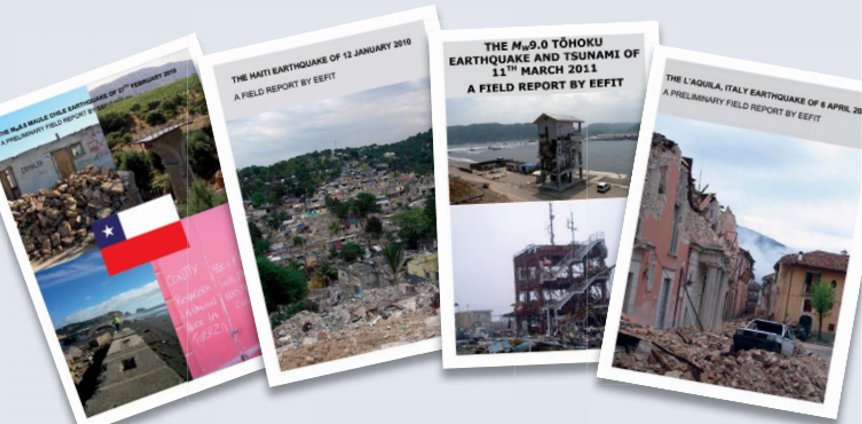
Blind Faults
“There are lots of blind faults that have not ruptured in the last 100 years but no one has a historical memory of earthquakes in certain regions that they are occurring,” she said. “The unpredicted liquefaction that occurred in Christchurch, causing untold damage, and the rupture of a previously unknown fault line just confirmed how little we know about the planet,” added Dr. Rossetto.
If a large population has settled in a previously unknown earthquake prone zone, there is often a calamitous result. But new technology is helping to find out areas at risk. For example, it has recently been discovered by experts at the Oxford and Cambridge Universities in the UK using Global Positioning Systems (GPS) that Tehran in Iran sits above a fault line.
Just to be realistic
“The seismological community is far away from being able to predict what is going to happen or what has happened, as we do not know enough about the structure of the Earth yet. What we can do is make recommendations on what we do know about the occurrence of past earthquakes and the vulnerability of the built environment. These can give us good indications on whether the risk in a location is high or low,” she concluded.
For more information, please check
EEFIT – Earthquakes Engineering Field Investigation Team
www.istructe.org/knowledge/EEFIT/Pages/default.aspx
ESPRC - Engineering and Physical Sciences Research Council
www.epsrc.ac.uk/Pages/default.aspx
ISE – Institution of Structural Engineers
www.istructe.org/Pages/default.aspx
VDV – Virtual Disaster Viewer
www.virtualdisasterviewer.com
1Booth, E., Wilkinson, S., Spence, R. J. S., Free, M., ROSSETTO, T. (2011). EEFIT: the UK Earthquake Engineering Field Investi-gation Team. Proceedings of the ICE: Forensic Engi-neering 164(FE3), 117-123



